


The Beating Heart of Titanic
What made the big ship go?
A Chance in a Million
A FAA pilot and an injured boy gave the world a star
Operation Specimen
A desperate measure to save convoys
Edition 80 - April 2024

The month started with the Fleet Air Arm Association writing to Chief of Navy to express our concerns with the trajectory of the FAA Museum. It appears to us that what was once a flourishing attraction is now, by and large, a shell.
The FAA is the only arm of the Service which has, through years of hard work and diligence, built a world-class facility to tell its story. The Director of Navy Heritage referred to it as “The Jewel in the Crown” but, regrettably, it has been allowed to tarnish under Navy’s stewardship.
The museum cafe closed some years ago and more recently, the front shop was emptied. Staff shortages then closed its doors entirely for a while but, unfortunately, without proper notice to the public who continued to arrive for a visit only to be disappointed. Not good for Navy’s reputation.
The provision of a few more reservists means that it can now open at weekends, which is the current regime. It’s hard to get a guide to show you around, though, so most visitors have to rely on the pictures and captions to extract the story of our rich heritage.
We also became aware that two other Navy museums in Sydney are to close and their artefacts are to be stored at Albatross. Some will go into “J” hangar but those that require climate control will go into what is currently the Downton Gallery in the FAAM, which will have shelving installed. The paintings of John Downton, renowned artist and benefactor of both the museum and the FAAAA, will be stowed away.
THIS MONTH’S COVER PHOTO



We met with the Director of Navy Heritage on 22 March for a long discussion on our concerns. He assures us that every effort is being made to improve “the customer experience” in the Museum, that Navy’s heritage is in safe hands and the disruption is only temporary as negotiations are in place for a more permanent location for the exSydney artefacts. We consider this timeframe unlikely, which questions the veracity of his strategy. We will continue to make representation to Navy and will monitor the situation closely. YOU can put your shoulder to the wheel by writing to CN as a concerned individual. Email me here for his address, and further background.
On a happier note I’m delighted to welcome Graeme Lunn back into this edition with a fascinating account of how V.A.T. Smith was involved in the desperate attempt to protect British convoys from the long range Focke-Wulf Condors that harried them. In fact VAT was amongst the first aircrew to be rostered for Operation Specimen, as it was known. It was a ‘one way ticket’ as there was no deck to return to once their aircraft had been catapulted.
Had VAT actually launched, history might have been different. The father of the Fleet Air Arm may not have been there to champion its birth and guide it in its youth, and the extraordinary story of his life might have been short.
Graeme’s new book on the life of VAT is due for publication later this year, so watch this space. ✈
REST IN PEACE
Since the last edition of FlyBy we have been advised that the following have Crossed the Bar:


Peter Keys, Steve “Hector” Crawford, Ken Morley, Kev Duffey
You can find further details by clicking on the image of the candle.
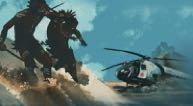
THIS MONTH
22 30
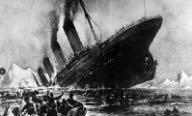
16

REGULARS REGULARS
02
Editorial
A few words and thoughts from the Editor of this magazine.
02
Rest In Peace
We remember those who are no longer with us.
04
Letters to the Editor
This month’s crop of correspondence from our Readers.
26
Mystery Photo
Last month’s Mystery answered, and a new one presented for your puzzlement (p13).
08
Around The Traps
Bits and Pieces of Odd and Not-so-odd news and gossip.
05
FAA Wall of Service Update
The status of orders for Wall of Service Plaques.
HERITAGE FEATURES
16
Titanic’s Heart Pt. 1 Titanic was the jewel of British shipbuilding. We look at what made her go.
22
A Chance in a Mil. What were the odds of a wild Aboriginal boy becoming world famous?
26
Hot, Not Bothered
It all about thermal expansion.
30
Operation Specimen
The story of the desperate attempt to protect convoys from marauding Condors.

2 3 Editorial Content
✈ ✈

Dear Editor,
Lots to read in the March ‘FlyBy’- very interesting spread of articles too.
That was good of Fred Dawson to comment on the Sea Venom air firing photos and to correct my ‘Tribal’ blunder (repeated in the Sycamore photo in the March edition). I’m not sure about HMAS Anzac towing a target for air gunnery but Anzac did tow targets for ships gunnery – but guess he is right in any case.
Anyhow Fred touched on HMAS Anzac firing on HMAS Tobruk and hitting her with a shell – as it happens , I managed to take a photo from the flight deck of HMAS Melbourne, which shows Tobruk pumping water.
Bob Burchill who was Captain’s Cabin Hand on HMAS Anzac told me that a signal from Tobruk’s
Captain D was received saying “You have straddled me – twice – in fact you have holed me. Now come and tow me home.” At the time, HMAS Tobruk was in company with Anzac, Vendetta, together with HMAS Melbourne and the submarine HMS Andrew conducting exercises in the Jervis Bay region. The following notes are based on Anzac and Tobruk ROP’s.
On the morning of Wednesday, 14 September 1960, a naval gun fire exercise began with HMAS Anzac conducting a ‘throw-off shoot’ using practice projectiles with HMAS Tobruk as the target. The plan was to off-set guns 9° from the target – which was done – but somehow the guns drifted back to their original place. Firing range to the target was approximately 18,500 yards (16.9 Km), with the first salvo straddling Tobruk at 1002K. The result was a port side hit on the Engine Room at the water line – making a hole 4 feet 6 inches long and 3 feet deep, enabling sea water to flood the Engine Room.
Alerted to the problem HMAS Anzac immediately closed on Tobruk to render assistance, transferring a Damage Control Party complete with diesel and electric pumps by motor cutter. Meanwhile Tobruk reduced Engine Room flooding by plugging the hole with hammocks and a shot mat covered by an awning – Tobruk also pumped water from her bilges tilting the ship to starboard and discharging water on the port side. By 1115 with the aid of various pumps the water level in the Engine Room was noticeably reduced.
weather was calm, and the ships reached Jervis Bay without incident where the tow was slipped by 1730. With Tobruk anchored at Darling Roads, listing to starboard to place the hole above the water line, the Engine Room was pumped dry. With Assistance from HMAS Melbourne a plate 5 feet by 5 feet was secured over the hole. A Board of Enquiry was assembled to investigate the cause of the mishap. Apparently, a malfunction of Anzac’s gunnery fire control equipment allowed the guns to drift back from the throw-off angle that was set before firing commenced, however it was found that some personnel had failed to fully comply with safety precautions.
After a day at Jervis Bay clearing the boilers, engines, and machinery of salt water Tobruk successfully conducted steaming trials and at 0001 Saturday 17 September the ship departed for Sydney securing at the East Cruiser Wharf at 0900K. On Monday, the ship commenced paying off into E2 Reserve. Although Tobruk was recommissioned in 1961 for a limited training role she was soon retired and used for crew accommodation while ships were repaired at Garden Island. Finally, Tobruk was towed from Sydney Harbour on 10 April 1972 for breaking-up in Japan.
Cheers, Kim Dunstan.
external prop shafts/tail shafts on both the Port and Starboard side were of the same length. The internal lengths of both the Port and Starboard shafts weren't given in the article. Due to thelonger internal Starboard shaft, the shaft used to vibrate (mechanical resonance) and that was corrected by substituting a four bladed prop to the Starboard shaft. Three bladed propellersgive a higher maximum speed but four bladed props can reduce vibration and cavitation. While the diametersof both propswere the same at 14 feet, the pitch of the Starboard prop was slightly finer than the Port prop. The blade area of the Starboard prop was 99.3 sq ft and the Port prop was 90 sq ft and I won't bore you with theother small differences.
The article also mentioned that both blades rotated outwards i.e. counter rotating in that, the Port went anti-clockwise and the Starboard went clockwise.
Regards, David Prest
Thanks David, I couldn’t locate a photo of HMAS Melbourne’s propellers, but did find one of HMAS Sydney’s. As you point out, both ships were of the same class. ✈

HMAS Anzac then took Tobruk in tow with some four shackles of cable, and by 1215 both ships were under was making about five knots headed for Jervis Bay some 25 miles away. Fortunately, the
PS. In 1959 HMS Andrew was used as the fictional USN nuclear submarine USS Sawfish in Stanley Kramer’s film ‘On the Beach’.✈
Dear Editor,
Over the years there has been talk about why the Sydney/Melbourne had three blades on the Port propeller and four on the Starboardside.
Most talk has been about the Island being on the Stbd side therefore, the weight, etc would require four blades versus the three. I was reading the Naval Historical Review of December 2019 (pps 11 - 13) and it explained it all. Please forgive me if you do know why the three versus four blades configuration exists.
It turns out that when built, the Colossus class and the Majesticclass (which could be called the improved Colossus class) had the same configuration of two compartment engine rooms with the Starboard engine compartment forward of the Port compartment. This necessitated a longer internal shaft to the Starboard propeller; the

4 5 Letters to the Editor Letters to the Editor

Dear Editor,
I have just read your editorial comment on the Taipan crash (FlyBy Editorial March 24) in which, sadly, four Army aviators lost their lives off Queensland coast in 2023.
I am in “heated agreement” with you regarding the apparent questionable investigation and reporting of this tragic occurrence, and the following issues relating to the decommissioning and disposal of this helicopter type from ADF inventory.
My understanding, however, was that the AAIT/ DSTO and BOI investigations had been completed but were being “quarantined” for security reasons.
Additionally, and having participated in the BOI loss of Shark 02 in April 2005, I question any such proposition that the accident was solely due to “faulty” HUDs. I say this worryingly if our modern aviators are relying wholly on their NVG/HUD equipment and not, as reported in this case, their primary instruments. Of course, I’m speculating on the environment and other conditions and the flight parameters at the time of the accident, but when we were first starting out with NVGs in Seahawks, we required at least one of the pilots or the TACCO “on the clocks” especially when low-level. Same when we were doing Wessex CT night operations to the offshore oil rigs, without NVGs!
I would also be looking for evidence of the many other potential causal factors, particularly in the human and organisational psychology realm.
Additionally, I am yet to be convinced that the Taipan helicopter was the abject failure that Army claims it was. It was a complex aircraft involved in
Army Taipan MRH-90 of the type that crashed into the sea off the coast of North QLD on 28 July 2023, taking the lives of the four men aboard.
So far, more than seven months after the accident, three separate Defence Force investigations have either been completed or are in progress. Defence has not yet released any advice on the cause of the disaster, despite damning media speculation.
complex and challenging missions. Some issues of mission accomplishment during introduction into service should be expected, but overcoming them is a leadership responsibility unless absolutely untenable. Again, I am yet to be convinced this was the case with the Taipan helicopter.
The upcoming IGADF investigation will be interesting in its TOR, as will the Coroner’s report on the causes of death of the crew. While I suspect the ADF/Defence leadership (including the politicians) will wish to be less than transparent on the outcomes from these later reports, I personally hope the opposite occurs if only to honour those that perished on the night, and their comrades who will bear the scars of tragedy for many years to come.
Yours aye, Brett Dowsing ✈

Dear Editor,
This afternoon by chance I found the full video from which the screen shot in the January Flyby is taken. It is titled "Seapower" on Youtube. Click on the orange-brown image of HMAS Melbourne, shown at the end of this letter.
The video (27 and a half minutes) is in excellent condition and well worth watching. It features Rear Admiral "Ming" Dovers and I think the submarine captain is LCDR Tony Roach (others may confirm).
I can confirm that the TACCO in your “Facial Recognition” photo on the previous page is definitely Jon Jones (RIP) and the pilot is American, possibly Preston King (RIP). Yours aye,
Owen Nicholls.

We are urgently in need of willing volunteers to help guide and assist the FAAAA. Positions vacant, or perhaps soon to be are:
QLD Division AGM
The 2024 Annual General Meeting for Queensland Division will be held on for Saturday the 20th. April in the Naval Association Rooms.

Yvonne Barlow Pk. Ogg Rd. Murrumbra.
The meeting will start at 1000, and lunch will be held in the Tavern across the road on completion.
The current Secretary, John Stewart, will be standing down after many years of dedicated service to the FAAAA, and a volunteer is urgently needed to take over his position.
0420 563 010 Hon Sec FAAA Qld ✈

National President. The National President is the titular head of the Association. He or she will preside over the annual meeting of the Federal Council (when all Divisions of the Association get together), and will represent the Association on (infrequent) occasions that require official representation. He/she shall also be the spokesperson on all matters relating to the activities, business and objects of the association.
Editor, Slipstream Magazine. The Editor is responsible for compiling our quarterly flagship magazine, “Slipstream” and submitting it to the webmaster and the printer. Once printed, he/she will assist in distributing a relatively small number of ‘hard’ copies, together with a small ground of willing volunteers. Assistance is available to procure/update your computer to a standard required, and with training to run the necessary desktop publishing software.
Webmaster. The webmaster is responsible for the posting and upkeep of material on the Association’s website, and with working with our professional developers on the rare occasion a technical problem occurs.
Any of these positions can be occupied in any part of the country as electronic connectively will allow the job to be done remotely.
The lack of volunteers will eventually dramatically impact on the ability of the FAAAA to function, so step up now if you’d like to give something back.
Please contact the Editor of this magazine here if you are interested in finding out more information about these positions.
6 7
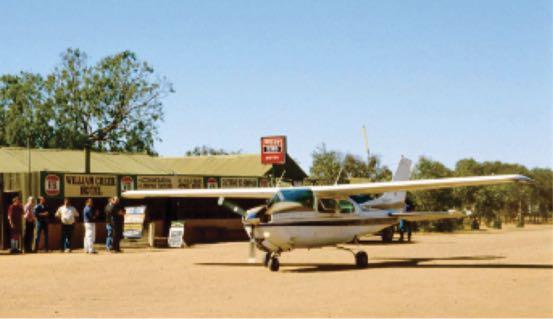






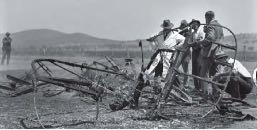
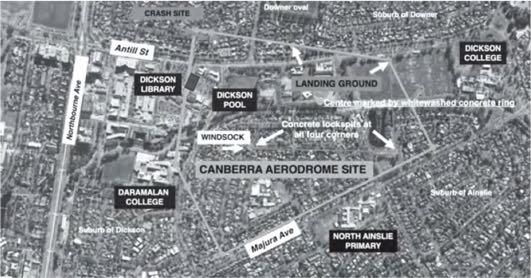
✈ 9 News, Quirks and Snippets ✈ ✈
Aviation Historical Society of Australia.


US Lifts Flight Ban on V-22 Ospreys
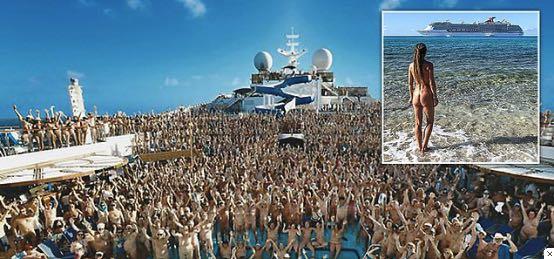
The US military has lifted its ban on flying the V-22 Osprey, imposed after a crash off Japan in Nov 23 which killed eight service members. According to some eyewitness accounts, the aircraft inverted and one engine caught fire before it crashed into the sea. The wreckage was eventually recovered but significant saltwater corrosion hampered investigation.
US sources have now determined that the accident was caused by “material failure”, adding that although they know what component failed they could not say with any certainty why it did so.
The clearance to resume flying now comes with additional training and maintenance requirements which are, as yet, not clear to outside agencies. The new requirements will take a while to implement so a phased approach to flying will probably occur. ✈
U Boat Found
A mystery has finally been solved after the resting place of UC-18, a German U-Boat that went missing in 1917, was recently found at a depth of 70 metres in the English Channel. She is said to be ‘in amazing condition’ (see photo right).
Not far from her the wreck of the secret RN ship, “SS Lady Olive” was also found. It is the only known action where a submarine and RN ship sank each other.
A BBC documentary about the search for, and eventual discovery of the vessels will be aired in the UK in June and is expected to be available here, too. You can see a teaser here.
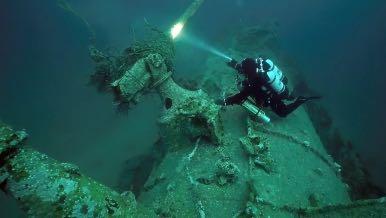
The Lady Olive was a ‘Q’ ship: a nondescript vessel designed to look like a tramp steamer, but armed with hidden guns. Having lured a submarine in range the guns would be deployed and the U-boat engaged.
Lady Olive’s crew survived, and reported seeing the submarine sink with all hands, but until now it had not been confirmed.

11 News, Quirks and Snippets ✈
here ✈

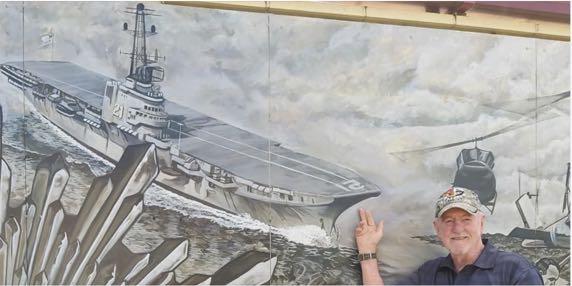
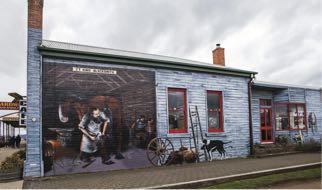
struggling in the mid-80s with little business and a diminishing population. A small committee was formed to see what could be done and an idea was floated to invite artists to decorate the town. There wasn’t any money to pay them, so the first artist, John Lendis, agreed to ‘paint now and be paid later’. The first mural took 3 months to create and was opened in ‘86.
If you are in Tassie, its worth a visit. Sheffield has a charming outlook not far from Devonport and is surrounded by little settlements with tantalising names like “Nook”, “Nowhere Else” and “Promised Land”.
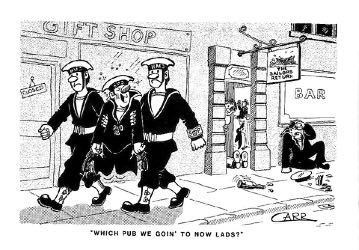
This Month’s MYSTERY PHOTO Question
Greg Kelson of WA Division, aka “Skinhead”, kindly alerted us to a couple of posts on a Facebook page by Tony Smith (see above). Tony was recently visiting Sheffield (TAS) and found these magnificent murals painted on buildings therein.
Sheffield, a small town to the west of Launceston, is becoming well known for its murals. Over 200 of them adorn its walls, many of which tell the history of the town and the people who have lived there (see left).
Like many small rural towns Sheffield was
 This aircraft looks like something out of an Indiana Jones movie, but what was it? There may be a couple of historical faces in the crowd that you know about too, for a bonus point each. Send your answer here ✈
This aircraft looks like something out of an Indiana Jones movie, but what was it? There may be a couple of historical faces in the crowd that you know about too, for a bonus point each. Send your answer here ✈
13 News, Quirks and Snippets
✈

Fivefunnels?
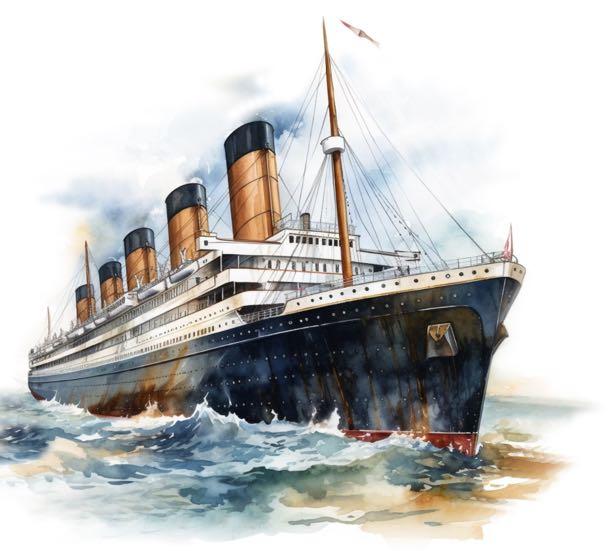
Titanic II 2B Salvaged...Again
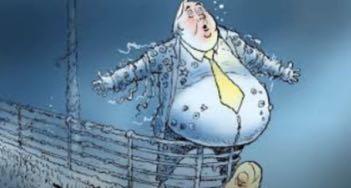
On the face of it, looks like a photo of any other parade, but it was a bit different. It shows the guard at the ‘general salute’ upon the arrival of the newly appointed Japanese Ambassador to Australia, His Excellency, Katsushiro Narita, at ‘Yarralumla’, Government House, Canberra, where he presented his credentials to the (then) Governor-General Field Marshall Sir William Slim on 20 April 1959.
The guard, which was bussed over to Canberra from RANAS Nowra, consisted of 96 ratings, two Petty Officers and two Guard Officers. The Guard OIC was Lieutenant Haines (centre) and Petty Officer Bolitho (front LHS). Most of the sailors were from the School of Aircraft Engineering at HMAS Albatross.
Interestingly, Governor-General sent a note to the Captain at Nowra congratulating the guard on: “mien physique; mien smartness; mien arms drill and mien quietness on parade.”
Anyone remember this event? Share your thoughts here. ✈
Clive Palmer has vowed again to build a replica of Titanic, the ill-fated White Star liner, which he says will be “far, far better than the original”, as he unveils designs for his project - again.
Palmer hired a room at the Sydney Opera house in March to let everyone know that his dream to build the vessel would finally
It was almost 10 years to the day since he announced at a similar conference that he would form a company called ‘Blue Star Line’ to build a copy of the famous ship. The Chinese company contracted to build the vessel ceased work in 2015, however, after a payment dispute.
Unrepentant, Palmer blamed the Covid pandemic for the delay, and explained to the gathered media that people should believe him this time because “I’ve got more money now”.
“I could die having done nothing,” he continued, “So I could do the Titanic. It’s a lot more fun than it is to sit at home counting my money.”
So far no shipyard has been contracted, but Palmer is confident work can start next year, with the maiden voyage from Southhampton to New York - replicating the original Titanic’s first and last trip - scheduled for June 2027. One hopes they don’t replicate it too exactly.
Will it happen? Yeah, of course it will. Clive has told us so. ✈
14 15 News, Quirks and Snippets
➴
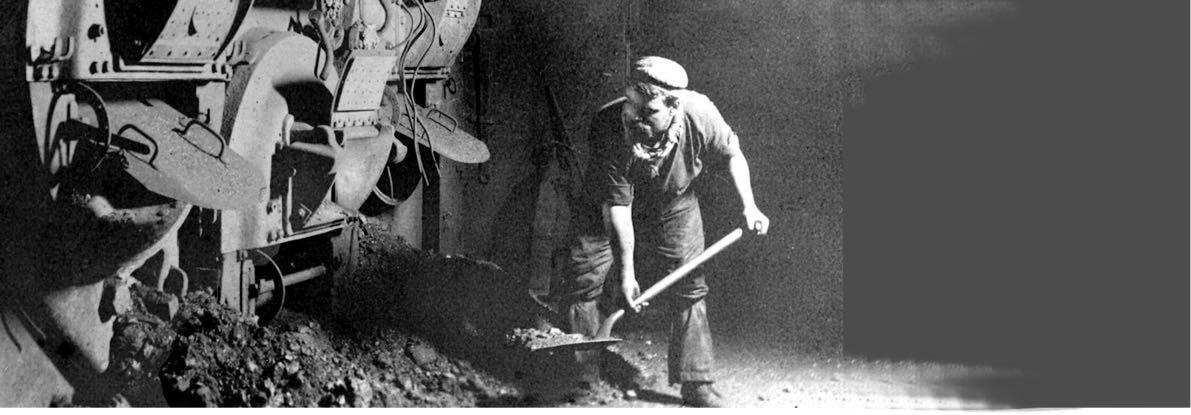
The Beating Heart of

Part 1: Making Steam
The 52,000 ton luxury passenger vessel Titanic, the largest ship ever built at that time, was launched on 31 May 1911. Fifteen thousand men had laboured to build her, eight of whom died doing so, and, when the day came, 22 tons of soap, engine oil and soft tallow were used to lubricate her descent into the River Lagan. She was widely regarded as an engineering marvel. The technology of the day was steam, and was the sole means by which the mighty ship could move. She was designed to cruise at up to 23 knots, which required about 59,000 horsepower, and every single one of them was derived from heating water to make steam, and then extracting its energy to drive three mighty engines and other miscellaneous equipment.
For a year after her launching the largely empty hull was fitted out. At the keel went the enormous bedplates, to which her engines were secured. Next to them 24 double-ended and 5 singleended boilers were laid, with their uptakes running to three massive funnels high above (the fourth funnel was a dummy). Around the boilers and engines went fans, generators, drive shafts, trunking, ovens, condensers, evaporators and refrigeration plants, and the myriad of ladders, passageways and pipes to carry people and products to and from her bowels. Some machinery spaces were enclosed: others, like the boiler rooms, reached right up to skylights on the
provide fresh air and dissipate heat.
Fuel for the bunkers was coal: the best that British mines could provide - Titanic carried 6,611 tons of it. Just the bunkering system alone was a marvel, as it comprised 34 coal storage spaces, fed by 35 coaling ports just above F deck.
Coal was loaded from barges which were brought alongside the liner. Prior to loading, every ventilator cowl was covered by canvas, air vent louvres were closed and all interior spaces closed off. Where possible access doors, port holds and companionways were kept shut. The Chief Engineer monitored the ship’s list and trim as the coal was shovelled into quarter-ton buckets which were then lifted and tipped down the coal chutes into the bunkers.
There, ‘trimmers’ moved the incoming coal using shovels and wheelbarrows to distribute it evenly. As the lower bunkers became full, the remaining coal was distributed across the upper bunkers which surrounded each boiler room.
It was a long dirty job, with 12 to 15 tons of coal per hour being handled by just six men, with little protection other than wet rags over their faces to keep the worst of the dust out of their lungs. Absenteeism was common when coal was taken aboard.
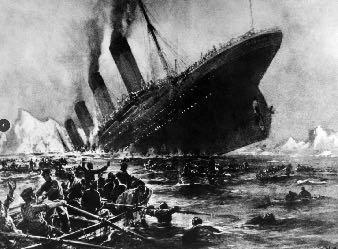
The job of feeding coal into the boilers fell to stokers, known as “The Black Gang”, or sometimes “The Black Feet Brigade” for obvious reasons. They were a segregated group whose working life was searing heat, dust, filth and hard labour.
Each one of them worked four shifts a day: four hours of shovelling coal into the insatiable mouths of the furnaces, eight hours to sleep and recuperate, then the cycle repeated. They lived in a messdeck far forward and separate from other crew quarters. Their job was to keep the Scotch boilers burning to supply steam to the mighty engines. They were the manpower behind the horsepower.
Scotch Boilers
Scotch boilers, in their simplest form, were large cylindrical vessels interlaced with tubes and support stays were water was boiled. They were sturdy and reliable and required little maintenance, making them the most plentiful boiler of the British Merchant Navy.
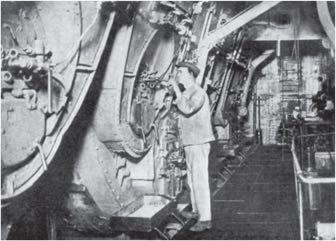
The Scotch Boilers were made in two forms: single ended, or double ended. The latter was more popular as it was cheaper than two single-ended boilers.
Steam for Titanic’s engines was raised in 24 double ended and five single ended boilers. Each double ended boiler contained three furnaces at each end (a total of six). The ship therefore had a total of 159 furnaces.They consumed about 850 tons of coal per dayan average of 35 tons per hour - and every one of them was fed manually.
16 17 Historical Interest
upper decks to

Dangerous Coal!
When cut coal is exposed to air it rapidly absorbs oxygen, which produces heat. The fuel, especially when newly worked, also gave off “Marsh Gas”, otherwise known as Methane, which is combustible when mixed with air, and readily ignited. Methane is also poisonous if breathed.
At a proportion of 10% (methane to air), the gas became explosive. Fortunately, methane is lighter than air, so whenever possible Titanic’s bunker lids or hatches were opened in fine weather to vent the gas away. As far as possible bunkers were also worked chronologically, to use the oldest coal first.
Bunker fires were also a hazard, and quite common. Heat produced by oxidation could ignite lower levels of methane, generally in the centre of the bunker. Small fires, if caught in time, could be doused by means of sand to smother them. Deeply seated fires had to be dug out ifpracticableandtheburningcoalsremovedcompletely.Ifdousedwith water or steam, large volumes had to be used otherwise ‘water gas’ was generated, which exacerbated the fire.
In fact, Titanic was given a certificate of seaworthiness in spite of a fire burning in W bunker when she left Belfast. The fire smouldered for three days throughout her maiden voyage. It was finally extinguished by emptying the bunker and hosing down the burning coals, a feat which was completed just two days before the ship foundered.
One conspiracy theory was that the bunker fire caused the loss of the ship, not ice. There was a photograph released in 2017 showed an apparent 30-foot black mark on the outer hull of the ship,justbehindwhere the ship’s hull was pierced by the iceberg.
The theory was that the fire weakened the hull plates, enabling them to be easily penetrated. The conspiracy was dismissed for a number of reasons, not the least of which was that the bunker fire occurred some distance away from the alleged black mark. ✈



Heating the 48½ tons of water to boiling point was a slow process, generally taking from eighteen to twenty-four hours. Because of this, a full day’s notice was usually required before steam was available to turn the engines. The water didn’t heat evenly, either, so it had to be done gradually, and an auxiliary pump was required to circulate the water in the boilers.
Left: One of the “Black Gang”stokers, or firemen. Although their job was stigmatised, it actually demanded not only a high standard of fitness, strength and stamina, but also awareness and skill.
Below. The boiler shop at Harland and Wolff, around 1910, showing a three-burner single engine furness. (John McMillan).✈
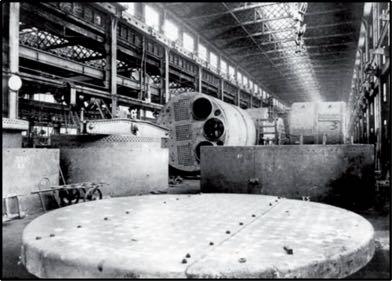
18 19 Historical Interest

A Job of Skill
A fireman’s job was not just to shovel coal into Titanic’s boilers: it was, rather, to maintain a rapid supply of steam according to demand. This required a lot more skill than they were often given credit for.
They were assisted in the task by a device known as Kilroy’s Stoking Regulator, which set the time that each furnace was required to be fired depending on how much steam was required.
The Stoking Regulator controlled eleven Stoking Indicators in the stokeholds. These showed which of the three furnaces at a given end of any boiler were required to be fired, at any given time. A gong would sound which was the signal to slice, rake out and stoke. Another gong would then sound for repetition in another furnace.
The interval between gongs could be set from between eight or thirty five minutes, depending on how much steam was required. The shorter the interval the more steam, and the more frenetic the pace for the firemen.
The number of indicators allowed timing to be staggered and coordinated so the minimum number of furnace doors would be open at any one time, and no opposite doors on open-ended boilers open together. In short, they allowed a systemic and regular rotation of firing.
The Stoking Regulators were not directly connected to the engine telegraphs as they had to anticipate future steam requirements. It required a high degree of anticipation and coordination by the ships’ officers.✈
A vision of hell. This image shows the stokehold of the Aquitania, rather than Titanic, but the conditions were the same. The Trimmer in the foreground, whose job it was to deliver coal from varying bunkers to ‘trim’their levels, is emptying his barrow load onto the deck plates. Behind him are two firemen: the one on the right is about to pitch his shovel load of coal into the near furnace, and the one on the left has just done so. Note how high he has to lift the shovel. When the weather was rough, firemen stoked the fire as the ship’s bow plunged down and slammed the door shut as it rose again to avoid a shower of red-hot coals on their feet. Temperatures in the boiler rooms could reach 140° F (60°C).✈
Ash Disposal
The Titanic consumed about 850 tons of coal per day which resulted in about 100 tons of ash.
The ash collected in ash pits and, from time to time, these were raked out onto the deck plates where they were allowed to cool before being shovelled into wheelbarrows and taken to an Ash Ejector, or “Blower” - a container through which high pressure water was forced, to blow the waste into the sea as a slurry. Obviously this could not be done in harbour, so the ash was stored for later disposal either in a barge, or when the ship next sailed.
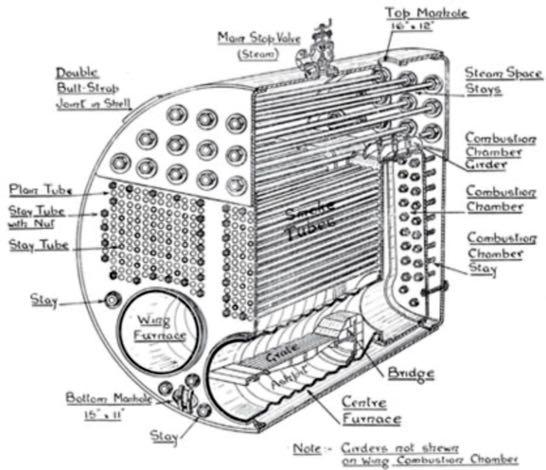
A cut-away drawing of a single ended Scott’s boiler, showing two of the three furnaces and the internal structure of the boiler. Basically, the main body of the assembly was filled with fresh water. Coal was burned in the three furnaces which transferred heat both directly to the water, and through ‘smoke tubes’ distributed through the water. Smoke was then taken to the ship’s funnels and steam, which gathered at the top of the boiler, bled off through the main stop valve. The boiler’s structural integrity was achieved by ‘stays’and girders. A working boiler would typically supply steam at around 200 psi, which was sufficient to drive the main (piston) reciprocating engines and then the turbine, before its energy was exhausted. The expended steam was then passed though giant condensers to return it to liquid state before being filtered prior to returning to the fresh water feed.✈
Steam, Glorious Steam
All of the above was necessary to produce steam, which, when all 24 boilers were operating, reached a pressure of about 215psi.
Steam was the lifeblood of Titanic. It not only drove the engines, but powered four main 400kw generators to produce electricity as well as a range of other ancillary equipment.
Having been harvested from all of the boilers, the high pressure steam passed through enormous pipes via two main steam stop valves on the en-

gine room side of the bulkhead. From there it was directed to the engines: initially to the huge triple expansion reciprocating units and then, finally, the Parsons low pressure turbine to extract the last vestiges of energy from the now almost exhausted gas.
In 1911 the size and scale of the engines was extraordinary. We will explain how they worked in a future edition of this magazine. ✈
20 21 Historical Interest
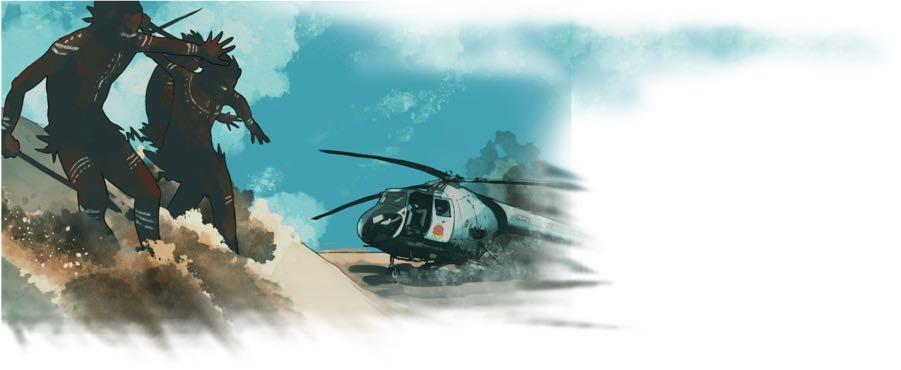
When ex-FAA pilot Jim Ferguson first laid eyes on a desperately sickAboriginal boy in the Great Sandy Desert in 1957, he could never in a million years have imagined the child would one day become world famous.
Ferguson had himself also beaten the odds. Brought up on a remote WA cattle station, he lacked any meaningful education in his early years and was largely illiterate until he was 11, when he was finally packed off to boarding school in Brisbane. Eight years later he joined the Navy as an electrician’s mate, and within four years earned a commission and was in the UK training as a Sea Fury pilot. He served on 805 Squadron, including in Korea in ‘53, and then 723 Squadron where he learned to fly Sycamore helicopters.

A chance in a million
they had never seen before. One of them, Olodoodi Tjungurrayi, thought it was manurruunurrku, a dragonfly. The youngest of the group, about ten years old, had no word to describe it.

Having left the Navy, Ferguson then worked for Ansett-ANA’s helicopter division and in 1957 found himself on a contract at Well 44, near Balgo hills in the Great Sandy Desert. His job was to fly surveyors who were looking for anomalies that might indicate the presence of minerals.
Today, just about every corner of Australia is connected in some way, but seventy years ago there were still nomadic Aboriginal people who roamed the outback, living as their ancestors had for more than sixty thousand years.
One day early in 1957 a small group of them heard a sound none had heard before: a diffused thump thump thump that reverberated off the escarpment near where they roamed. Searching the skies, they perceived something
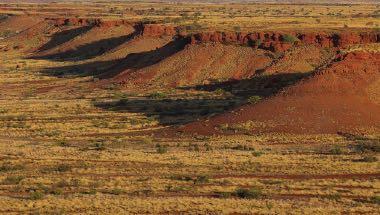
Over the next few days the ‘dragonfly’ returned, and the people noted where it rested at night. One of them, who would later take the name ‘Brandy’ because he took a white man’s job branding cattle, decided to approach the strange machine. He presented two members of their group to Ferguson, and indicated they needed help.
One was a young boy, who had always been a sickly child but was now in desperate straits, painfully thin and covered in sores. The other was his aunt, Kupunyia, who had an infected wound in her leg.
Although neither man could speak the other’s language, it was clear that Brandy was asking for help. Ferguson agreed, and airlifted the pair. You can imagine their surprise and apprehension as they flew over the desert, firstly to Billiluna Station to seek advice on where to take them, and then to Balgo Hills Mission, a little collection of stone buildings, tents and shacks in the middle of nowhere. It was run by Catholic Pallottine nuns who agreed to nurse them back to health.
Ferguson’s last sight of his patients was from the cockpit of his Sycamore as he started the Alvis engine to return to his mining camp.
For over 50 years he remembered the incident as little more than a yarn to be told over a beer. But in 2008 he read a newspaper article about a Balgo artist called Helicopter Tjungurrayi - so called because in 1957 an unnamed pilot had flown him to a mission to save his life.
“I thought he had died,” a stunned Ferguson remarked, “but I’m thrilled that he survived and that, after all these years, he’s still alive and I played a small part in that”.
It had been a close run thing. The facilities at Balgo Hills were inadequate to treat the little boy, and he was taken to Derby Hospital, some 800 km to the west. Nobody knows what his ailment was; perhaps rickets, as the rest of his group were not malnourished.
In any case, he survived and, in time, returned to Balgo where he worked in a quarry, hewing blocks of the hard red stone to build dwellings in the township. He married there and raised a family.
In 1987 the Warlayirti Art Centre opened in the town, and Helicopter’s wife was an early artist. But towards the end of the 90s he started painting himself, and flourished.

23 Historical Interest
✈
Ferguson and the man he rescued never met again, although they spoke on the phone. He died in 2018 at the age of 89 and there was talk of getting Helicopter to his Brisbane funeral, but it never happened.
But years later his only daughter, Lisa, made the journey to Balgo to close the circle. By then Helicopter was a widower and, with their respective parents all dead, the two people found a connection as they talked about the miracle that had saved the artist’s life so many years before.
Helicopter Tjungurrayi’s artwork is now a sensation, with solo shows across Australia and overseas. You can see his paintings in London, Paris and New York. Despite his fame he walks from his modest home to the art centre every day, and has a simple philosophy on his life and his success. “I paint my country,” he says. “The old people told me to look after my paintings, while I can still do them.”✈
Upper right. Ferguson in 2008 with a boomerang he found in the Tanami Desert (David Crosling). Middle: Lisa Ferguson-Bissell, Jim’s daughter, meets Helicopter Tjungurrayi (Adam Head). Below. Helicopter with his granddaughter at the Art Centre in Balgo (Adam Head). Inset: Helicopter and his aunt in 1957 (Ferguson).

Read Obituary
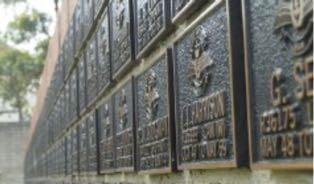
Current applications in Order No.53 are as follows:
• R.J. Cluley LS ATA S113325 Jul 72 - Jul 81.
• D.R. Hooper WO ATA S133260 Apr 82 - Apr 06.
• M.A. Sandberg ABATWL S125208 May78-May88.
• E.D. Sandberg LCDR(O) O1024 Apr50-Sep90.
• A. Clark CAF(A) R35828 Mar48-Mar63.
• A. Gillam CPO ATWO/ETW S118699 Jan76-Jan96
• B. Thompson LS ATC S128255 Mar80 - Jan93
• J.W. Lyall WO R65884 Nov66-Nov86
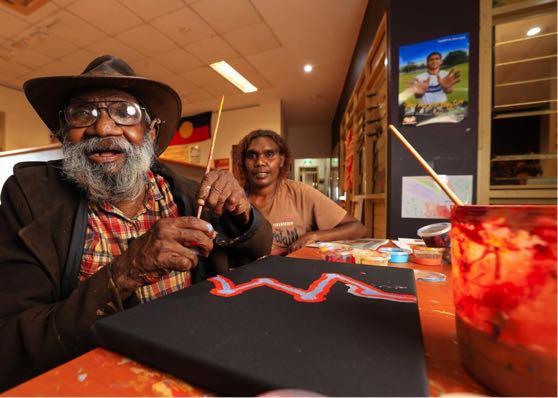

• I. Sausverdis CPO ATWL R62399 Jul63-Jul92
• M. Dagg CPO ATV S129644 May80-May00
• L. Stevens CPO ATV 8209580 Feb02-Feb24
This order is about to close and be sent to the Foundry. Last chance to get a plaque without a lengthy wait!! ✈

Have you thought about getting your name put on the FAAWall of Service?
It’s a unique way to preserve the record of your Fleet Air Arm time in perpetuity, by means of a bronze plaque mounted on a custom-built wall just outside the FAA museum. The plaque has your name and brief details on it (see background of photo above).
There are over 1000 names on the Wall to date and, as far as we know, it is a unique facility unmatched anywhere else in the world. It is a really great way to have your service to Australia recorded.
It is easy to apply for a plaque and the cost is far less than the retail price of a similar plaque elsewhere. And, although it is not a Memorial Wall, you can also do it for a loved one to remember both them and their time in the Navy.
Simply click here for all details, and for the application form.✈

24 25 Historical Interest Wall of Service Update
References: Wikipedia. Brisbane Courier Mail. Short Street Gallery. Film Freeway.
Watch Video

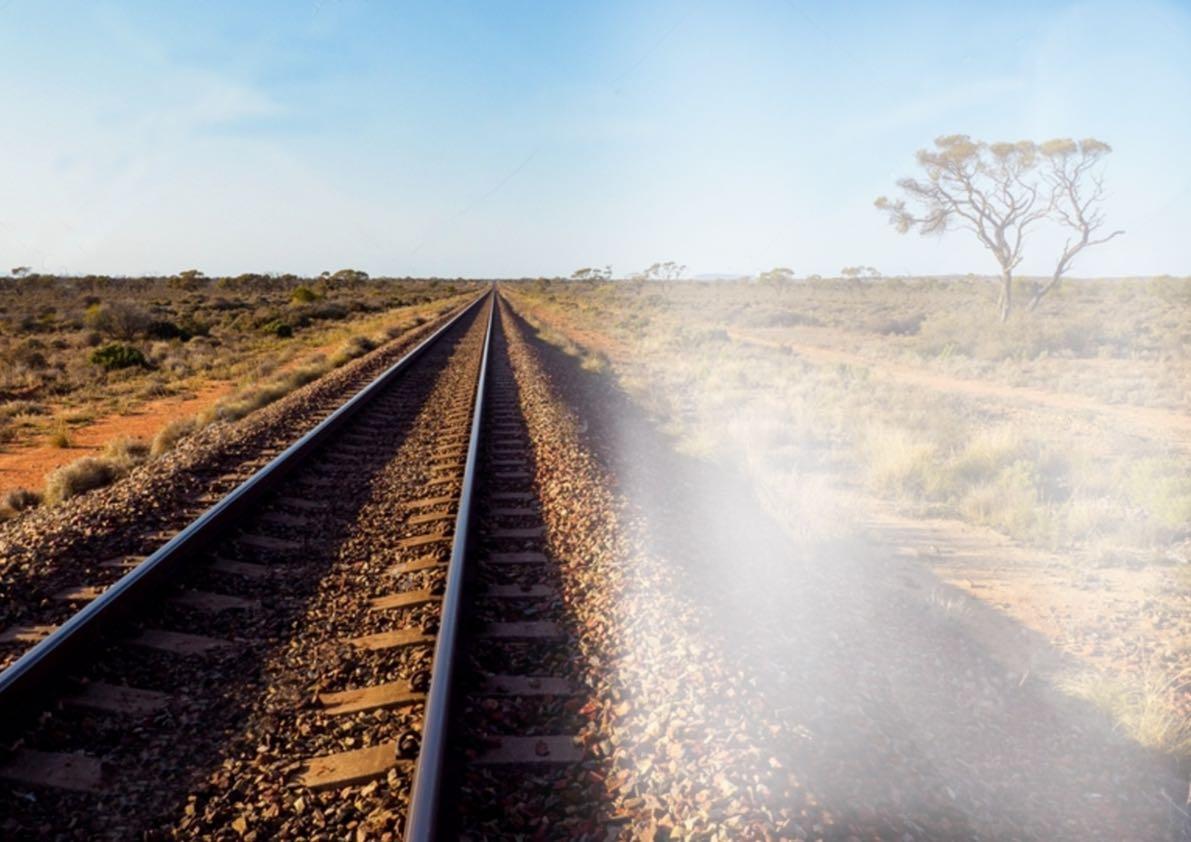
(or how I worried about thermal expansion for no reason)
by Marcus Peake
Back in 2004, when the Ghan was finally completed (only 120 years after it was first started), I remember asking an engineering mate how the welded track coped with the extraordinary temperature range it would be subjected to in the outback.
Being an engineer (bless ‘em), he thought about it for a while and then told me that yes, my instincts about thermal expansion were right, but the rail line was “so tightly bolted down it couldn’t move.”
I remember regarding his answer with some scepticism, but he was an engineer and I wasn’t, and folk like him had kept me safe in wonky flying machines for over 20 years, so he must be right. I knew then (and still do), that my brain was far from being on that level of thinking.
But roll on twenty years and I still had that niggling doubt, and with the benefit of time that retirement has given me, I thought I’d look into it a bit more.
Technical folk reading this are probably rolling their eyes at this point, but bear with me...and feel free to write and tell me what a numpty I am, should you feel the urge.
Steel is a good material to build railway lines from. Its malleable enough to forge into the shape you want, tough enough to do most jobs, and cheap enough to allow projects to be constructed. But it does have a relatively high coefficient of expansion: not as high as some materials (aluminium comes to mind), but high enough. In other words, it doesn’t stay still when the going gets hot.
To put things in perspective, if you heat five kilometres of railway line by 10ºC, it will grow in length by about 60cm, or two feet.
To be clear, it will try and expand sideways too,
but its not an issue because the clips that hold it in place will contain that small movement. Doing the maths, then: the Ghan is a tad under 3,000 km, so a 10°C increase in temperature would cause it to grow by an astonishing 360m. And that’s just for a 10° increase in temperature! In the desert, the ambient temperature can fluctuate between zero and 40°C plus, and the steel itself gets even hotter than that (on a 30° day rail line typically reaches 50°C).
OK, there’s some big assumptions here. Firstly, that each rail is one continuous piece of steel with no expansion joints, and two, that the full temperature variation is uniform across its 3000 km length. Clearly neither assumption is correct.
But my rough maths illustrates the point: railway line expands when it gets hot - by a lot. Even if we were only talking about (say) a 50 km length of welded line subjected to an increase in temperature of (say) 20ºC, you’re still looking at an expansion of about 12 metres. That’s a lot of movement to cope with. So how do you stop tracks from doing what the little photo below shows?
In the good old days, rails were laid in short lengths with a vertical gap between the ends. That took care of expansion, but it was noisy
Main: Laying track in the old days was backbreaking, laborious work when thermal expansion was dealt with by a large number of expansion joints. Not so much today, when machines lay continuous welded rail sections, many times quicker (inset). ✈

and uncomfortable as every wheel passed over the gap with a ‘clickety-clack’. More importantly, it generated significant wear and tear, with estimates suggesting about 60% of track maintenance resulted from expansion joints.
Enter continuous welded rail. In theory, you could lay a single piece of steel from Darwin to Adelaide, but that’s neither practicable nor good engineering practice.
The trick is to build the rail with an eye on the local temperature variation. In places where the temperature isn’t going to vary a great deal, you can lock the rail onto the sleeper so tightly that the expansion is contained.
In areas with a large temperature variation (like the Red Centre), go back to the need for more frequent expansion joints. Typically, the longest piece of continuous welded rail in such areas would be about 1.5 km before they put one in, but this distance can vary.
The ambient temperature when track is laid is also important: for example, if the steel is put down on a 25° day, that is the ‘normal’ for that section and expansion/contraction will only occur around that datum. So, where the mean

annual temperature is high, always lay track on a hot day - and vicky-verky in cooler areas. Bear in mind that every bridge or culvert on the Ghan (and every other line) also has its own thermal expansion/contraction signature, and there will be a thermal joint leading into and off the structure. I’m guessing that there’s a lot of them between Darwin and Adelaide, so that’s a swag of expansion joints already built into the system.
So, it turns out that my earlier concerns about how the hell 3,000 km of welded steel rail deals with a temperature range of some 20º - 30ºC was a waste of my time. Like everything else they do, the engineers had it figured out.
Now we’ve got the possibility of derailment out of the way, all I have to do is find the $10K fare for me and the Missus to do the trip... ✈
LAST MONTH’S MYSTERY
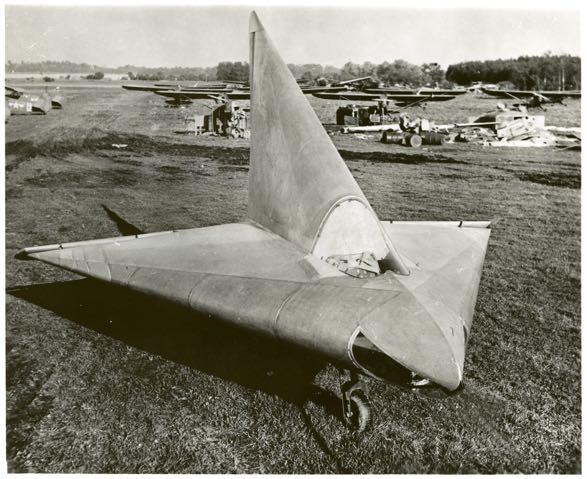
Last month we presented a picture of this unusual looking aircraft, and advised that although it never went into action it still had the distinction of saving more lives than it took. The lack of any propulsion system gives a pretty hefty hint that it was a glider, but clearly it only had one seat, and was therefore somewhat limited in its scope. So what was it?
Well, its a Lippisch DM-1, a German research glider developed in the final years of WW2. Lippisch’s original design was as the P12/13a (pictured right), a single seat ramjet powered fighter powered by powdered coal. It was unarmed, relying on its armoured wings to ram its opponents (what could possibly go wrong there?). The original design was also intended for single use, with the pilot bailing out when his mission was done, but landing skids were later added.
The DM1 glider was designed to test the P12a’s aerodynamics, with the engine intake and exhaust ducts covered, but Lippisch had by then lost interest as he had moved on from the design.
In 1944 aeronautical students approached him, begging for ‘vital war work’ to avoid being drafted to a war that was widely recognised as already lost. Lippisch gave them the abandoned DM1 project to work on. The working prototype had not been finished by the end of the war and the occupying Americans ordered the team to complete it.

It was then shipped to the United States, where it was test flown. Reportedly the results were positive and lessons learned were incorporated into NASA research aircraft of the 1950s and beyond. ✈
28 Trivia
PHOTO
The Lippisch P13a, for which the DM-1 Glider was a test bed, was conceived as a coaldust powered supersonic ramjet that would destroy allied aircraft by ramming them with its armoured wings.
✈
VAT Smith and


A Measure of Desperation
By Graeme Lunn

A Sea Hurricane poised on the forecastle of a civilian ‘CAM’ ship provided a desperate ‘one shot’ defence against marauding German bombers. Long before RAF “Hurricats” were reluctantly made available however, the fighters of VAT Smith’s 807 (Fulmar) Naval Air Squadron performed the task.
30 31 Feature Article
By the end of June 1940 the German Westfeldzug or Western Campaign had overrun the Netherlands, Luxembourg, Belgium and France. The occupation of northern France meant that the four-engined Focke-Wulf 200 Condors of Kampfgeschwader 40, relocated from Norway under Oberstleutnant Edgar Petersen, could range 1,000 nautical miles along the Atlantic convoy routes from their Bordeaux-Merignac base and exact a deadly toll untroubled by Allied fighters. Converted from a pre-war 26-seat airliner, which Lufthansa had flown from Berlin to New York over 20 hours in August 1938, the addition of cannon, machine guns and 5 x 250 kilogram bombs proved a deadly anti-shipping aircraft in the hands of its five man crew.
In August and September, attacking from masthead height to ensure accuracy, they sank almost 90,000 tons of shipping. Coupled with losses from surface raiders and U-boats, Britain’s life-line trade routes were critically threatened. Calling Condors ‘the scourge of theAtlantic’ Churchill, by December 27th, was demanding from his First Sea Lord ‘What have you done about catapulting expendable aircraft from ships?’ The answer was Operation SPECIMEN with Lieutenant Commander James Sholto Douglas RN and Lieutenant VAT Smith RAN, commanding officer and senior observer of the newly formed 807 (Fulmar) Squadron.

Sholto Douglas had commissioned into the RAF in 1928 and seen active service flying Wapitis on the Indian North-West Frontier during the early 1930’s. As a Flight Lieutenant he transferred to the FAA when the decision was made to return full FAA authority to the Admiralty, joining 822 (Swordfish) Squadron in February 1939. Surviving that squadrons heavy loss of life seven months later when Courageous was torpedoed by U-29 in the WesternApproaches he was selected to command 807. VAT Smith, appointed to the Naval College at Jervis Bay in 1927 aged 13, had qualified as an observer in 1938. Flying with 821 (Swordfish) Squadron in the first year of the war from the modern 22,000-ton Ark Royal and ashore from Sparrowhawk/Naval Air Station Hatston in the Orkney Islands, VAT had requested a transfer to a fighter squadron. Made 807’s SOBS (Senior Observer) the remaining aircrew were a mix of regular Navy, (A) branch and wartime Volunteer Reserve (A).
VAT’s rugby coach from Jervis Bay days had been the college’s Executive Officer, Commander Fogarty Fegan SGM RN, now captain of an armed merchant cruiser coincidentally named Jervis Bay. As the squadron worked up Fegan won acclaim for his actions on November 5th, 1940. The sole escort of 38 merchant ships in Convoy HX.84, when the heavy-cruiser Admiral Scheer appeared he sig-
nalled the convoy to scatter while immediately engaging the enemy head-on, an engagement he and 188 of his crew did not survive. Buying time for the majority of the merchantmen in his charge to escape, it was an exploit recognised with a posthumous VC gazetted less than three weeks later. VAT was not surprised to hear of Fegan’s heroism and took pride in having known such a fine officer whose attacking spirit he was emulating. Fegan’s sacrifice highlighted how stretched the navy was to ensure protection of Britain’s vital trade routes.
806 (Fulmar) Squadron was the first to be equipped with the new fighter. Before it could embark on Illustrious in September 1940 the type needed to be cleared for accelerator operations, contemporary naming then being that carriers had ‘accelerators’ while cruisers and battleships had ‘catapults’. No carrier being available, the service trials unit of 778 Squadron was tasked to carry out catapult trials aboard Pegasus that August, after suitable shore testing. Pegasus carried a DIH Double Action Athwartships catapult which could launch aircraft weighing between 5,500 and 15,000 pounds at speeds of 53 to 70 knots. Trials were successful and the desperately needed fighters commenced their embarked operational service.
At a joint RN/RAF conference on November 12th 1940, attended by Admiral Sir Tom Phillips, Deputy Chief of Naval Staff, the proposed counter-measures to get expendable fighters to sea protecting convoys started to take form. Before spare RAF Hurricanes were available Fulmars would be used although Phillips, aware they only had a 10 knot overtake advantage against a Condor, thought little of their chances. It was, however, the only option available at short notice to provide defensive air cover for the valuable convoys.
Audacity, the initial escort carrier being converted from the captured German freighter Hannover, would not be available until September the following year. The first of an eventual 35 catapult armed merchantmen, supplied with pilots from the yet-to-form RAF’s merchant ship fighter unit, did not sail with a convoy until June 1941. Of those 35 one-third would be lost in convoy service. The navy had started fitting out four auxiliary vessels as fighter catapult ships but these would not sail until May 1941, manned with fighter direction officers and radar operators plus aviators from 804 (Fulmar) Squadron. Churchill and theAdmiralty wanted immediate action so, no cruisers with catapults being available, orders went out to the still working-up 807 Squadron, now at Vulture/Naval Air Station St.Merryn in Cornwall, and to the catapult trials ship Pegasus in Portsmouth.
On November 25th at the Admiralty’s Naval Air Di-
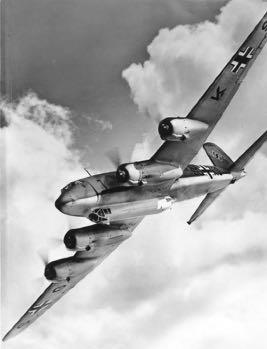
Focke-Wulf Fw200 Condor
The scourge of the Atlantic convoys was the four-engine Focke-Wulf Fw200.
It was christened “Condor” because of its long, thin wings which, like the bird from which it took its name, facilitated high altitude flight.
Fitted with machine guns, cannon and (later) an airborne radar, the aircraft’s greatest strengths were its extreme range, ability to loiter for long periods of time, and capacity to conduct accurate attacks against shipping.
It only had a crude bombsight, but the crews developed a technique of low-level bombing from abeam which ‘bracketed’ the target with three bombs, a practice which virtually guaranteed a hit. From June 1940 to February 1941 Condors were credited with sinking around 365,000 tons of allied shipping.
Operating well outside the range of covering allied fighters, innovative ideas were needed to reduce the threat. The answer, at least until light escort carriers became possible, was the Catapult Armed Merchant (CAM) ship. Armed with a single, expendable fighter it was a desperate measure taken at a time when no other alternative was available. ✈
32 33 Feature Article
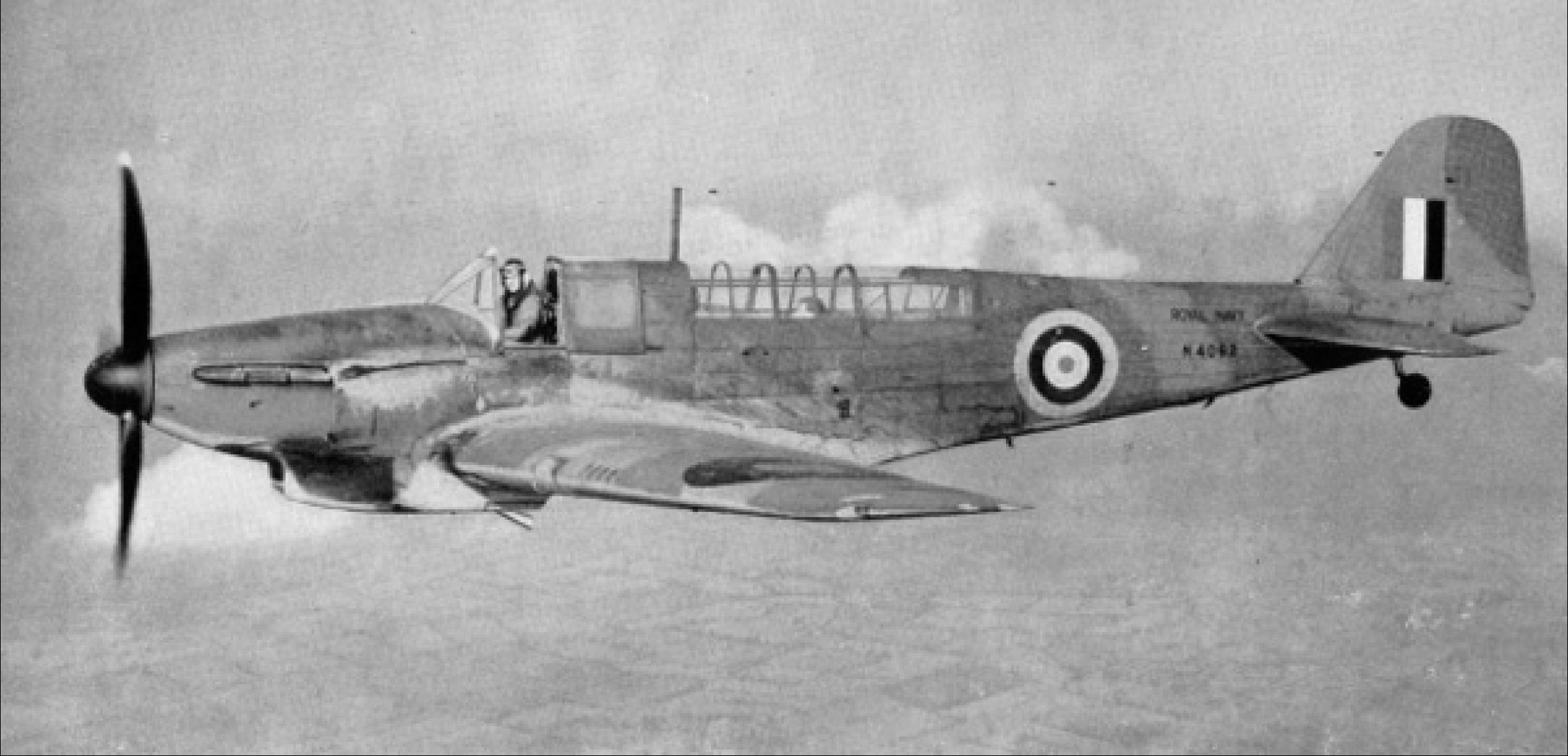
vision representatives from ship and squadron attended a meeting where plans were finalised and the code name SPECIMEN allocated to the operation. Pegasus was ordered to cease all training and trial duties and to be at four hours notice for sea by December 1st, while 807 Squadron was placed on standby at Vulture/Naval Air Station St. Merryn in Cornwall. Four days were allocated for a radar to be fitted to Pegasus’s new tripod mast. With no Type 279B ships radar available a RAF Air-to-Surface Vessel (ASV) Type 286M radar was hurriedly modified and the bedstead aerial fitted to the foremast. This radar proved accurate to 70º either side of the bow with a range of 25 miles.
With the Commanders-in-Chief Western Approaches and Portsmouth briefed the operation was

confirmed on the 28th. It was planned that the ship would trial sailing with a westbound convoy then changing to an eastbound convoy, maximising time in the danger zone to protect against the FW Condors. Pegasus did not even have a radio set to communicate with the fighter after catapulting, which was a one-way trip, survival being dependent on making the nearest landfall if in range, or recovery by a ship upon ditching or bailing out.
The CO and VAT, with other aircrew and maintenance sailors, proceeded to Portland to embark three Fulmars by lighter on Pegasus. One aircraft was secured in the hangar with hatch covered, one on the hangar hatch itself and one on the catapult. Having sortied into action aboard the newest air-
Left: A Fairey Fulmar. Like everything to do with Operation Specimen, it was a compromise - old, slow to climb to altitude and with a very narrow margin of speed over a FW Condor. On the positive side, it was better armed than a Hurricane and, if necessary, able to stay over the convoy for four hours before ditching. ✈
craft carrier, VAT now sortied on the oldest. Originally named Ark Royal and converted on slips into a seaplane carrier in 1914, this 6,900 ton Ark Royal had seen service at Gallipoli in 1915. In 1934, renamed Pegasus, she became the catapult trials and training ship and was now commanded by the reactivated Captain Philip Wodehouse DSO RN, who had commanded the destroyer Rattlesnake at Gallipoli before retiring in 1929. His new command was so slow she was to be restricted to 8 knot convoys.
Pegasus sailed from Portland on December 9th 1940, escorted by the destroyer Highlander and two corvettes, to join the 30 ships of outbound Convoy OG.47 from Liverpool and Bristol escorted by the destroyer Wild Swan with one sloop and three corvettes. Pegasus with Wild Swan and a corvette detached from OG.47 six days later joining the 21 ships of inbound Convoy SL.57, safely making Liverpool on December 19th. Each dawn VAT would have the DIH catapult rotated from its more sheltered night time fore-and-aft position to face the prevailing wind, then remain on standby to launch throughout the daylight hours with his CO.
HMS Pegasus was originally HMS Ark Royal, the second of five ships to carry the name. She was under construction as a merchant vessel in 1913, but was purchased by the RN and finished as the world’s first purpose built seaplane carrier. After serving a brief period in Reserve during the inter-war years, the ship was renamed Pegasus and was reactivated as a trials and training vessel. In August 1940 she trialed catapult launched fighters, although she was very slow (with a maximum speed of only 11 knots) and with minimal equipment. She didn’t even have a radio to communicate with her aircraft after launch. ✈
The First Kill

NSW born Lieutenant Robert “Bob” Everett RNVR was credited with shooting down the first Condor whilst escorting convoy SL.81. He was catapulted from the deck of the SS Maplin in a Sea Hurricane, and described the action as follows:
“I intercepted it after nine minutes’ flying and ranged up alongside at 600 yards and slightly above. The Focke-Wulf then turned sharply to port, but seemed to change its mind and turned back onto its original course. By this time, I had reached its starboard bow and three machine guns opened up, as well as the forward cannon. I did a quick turn to port and opened fire. I fired five-second bursts all the way until I was 40 yards astern. Another short burst and my guns were empty. I noticed pieces flying off the starboard side of the Focke-Wulf and it appeared to be alight inside the fuselage. I broke away to port at 30 yards.”

Everett then landed in the sea and was eventually picked up by the destroyer HMS Wanderer. He subsequently received a DSO.
Everett was born in 1901, and joined the RN at the age of 14 to serve as a Midshipman in WW1. Following the war he farmed in South Africa before returning to the UK where he rode the Grand National winner of 1929, at odds of 100-1. It was about this time he became an amateur pilot and in 1934 participated in an air race from Melbourne to Mildenhall in the UK.
He volunteered for service in 1940 at the relatively old age of 39, serving with 760 and 804 Squadrons.
Everett lost his life in January 1942, whilst ferrying a Hawker Hurricane from Belfast to Abingdon. Witnesses reported he was suffering from engine problems when his aircraft ditched in shallow water close to Anglesea in Wales. His body was later washed up and a post mortem revealed death by drowning. He lies at rest in a churchyard nearby.✈
34 35 Feature Article

For ten days no inspection or maintenance of the aircraft on the catapult was possible due to spray and ship’s motion with the winds gusting to 65 knots. The heavy swell restricted the convoy’s average speed of advance to only three knots for the first six days. Convoy Commodore of OG.47, in the merchantman Egyptian Prince, was Vice-Admiral Bernard Fairbairn CBE RN, a naval cadet in 1894 who had volunteered from retirement for this demanding role. Of Pegasus with her embarked Fulmars protecting the merchantmen he reported that although no enemy aircraft were sighted:
The presence of this ship provided tangible evidence of action being taken to protect vessels and did more to hearten and encourage the convoy than any other measure so far taken.
Other 807 aircrew took over in the New Year, and while Convoy OG.49 was at sea a Condor did appear. The Fulmar was quickly manned, engines started and the aircraft was run back on the catapult. When the order to fire was given nothing happened. In the excitement no one had put a cordite charge in the catapult firing chamber. There was no repeat of this mistake on January 11th, 1941, when Petty Officer Fred Shaw was catapulted from Pegasus. Unable to close with the Condor he did drive it off before diverting 250 nautical miles to Belfast.
By February 85 ships had been sunk by Condors and 804 Squadron (Fulmar/Hurricane) aircrew were now manning Pegasus, and later the Ariguani, Springbank and Maplin. It was from Maplin, escorting Convoy SL.81, that the Australian-born Lieutenant Robert ‘Bob’ Everett RNVR catapulted off in a Hurricat and downed the first Condor; picked up by the destroyer Wanderer he was awarded a DSO.
Before RAF volunteer pilots manned their precariously mounted one-shot Hurricat fighters aboard a CAM ship protecting a convoy, there were the naval aviators of 804 Squadron aboard RN fighter catapult ships, where volunteering was not considered. And before them all, in December 1940, was VAT Smith and James Sholto Douglas with their embarked flight from 807 Squadron aboard the FCS Pegasus.
Aircraft Profile - Fairey Fulmar Mk. 1
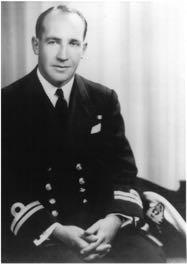
Fortunately, no enemy aircraft had come within striking range of the Fulmars, which were catapulted ashore once in Belfast Lough to RAF Sydenham (now Belfast City Airport). VAT’s laconic summary of these events merely noted ‘We did the first sortie and all was quiet’. ✈
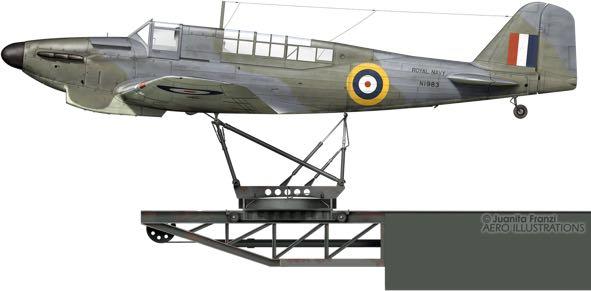
Powerplant: 1,035 Rolls-Royce Merlin VIII
Speed: 236 knots at 9000’
Range: 780 nm
Max Weight: 10,200 lbs (4,627 kg)
Crew: Two
Armament: 8 x .303 Browning Mk.II & One .45 Thompson SMG.
Considered too large, too heavy and too slow the Fulmar nevertheless had several positive attributes. Its weight meant it rapidly accelerated in a dive up to 390 knots allowing for one good firing pass before ‘mixing it’. It could fly CAP over the fleet for four hours, double that of a Hurricane, and carried an impressive 750 rounds per gun compared to the Hurricane’s 334 rounds. Excellent visibility allowed for easier carrier approaches and the huge rear cockpit was appreciated by the observer. Light and responsive on the controls, the Fulmar had no handling vices.
Critical operational deficiencies were lack of speed and a woeful rate of climb, taking fifteen minutes to climb to 15,000’. The main fuel tank between the two crew positions was armoured and the pilot had an armoured windscreen, but the observer was unprotected. First operational squadron was 806 which embarked onboard Illustrious in September 1940. By the end of that year there were four front-line squadrons including 807.
With no aircraft mounted weapon for the rear seat, the desperate stop-gap nature of the type and time was reflected in the Admiralty order that all observers were to be issued a Thompson sub-machine gun. 250 Mk.1 and 350 Mk.2 variants were produced. Considerably better than the Skua or the Roc, the Fulmar, inadequate against the latest Italian and German land-based fighters and bombers, nevertheless held the line until Hurricanes and Spitfires could be converted and finally sent to sea from July 1941 and August 1942 respectively, to join the increasing numbers of US built Martlets/Wildcats. ✈

37
Above: A Fulmar ready for a test on a catapult at the Royal Aircraft Establishment in the UK. Below: VAT Smith, who was SOBS of 807 Squadron and charged with providing the first Fulmars for fighter catapult ships.✈
Words of Wisdom…


Between 60 and death. It's time to use the money you saved up. Use it and enjoy it. Don't just keep it for those who may have no notion of the sacrifices you made to get it. Remember there is nothing more dangerous than a son or daughter-in-law with big ideas for your hard-earned capital.
Warning: This is also a bad time for investments, even if it seems wonderful or foolproof. They only bring problems and worries. This is a time for you to enjoy some peace and quiet.
Stop worrying about the financial situation of your children and grandchildren, and don't feel bad spending your money on yourself. You've taken care of them for many years, and you've taught them what you could. You gave them an education, food, shelter, and support. The responsibility is now theirs to earn their own money.
Keep a healthy life, without great physical effort. Do moderate exercise (like walking every day), eat well, and get your sleep. It's easy to become sick, and it gets harder to remain healthy. That is why you
need to keep yourself in good shape and be aware of your medical and physical needs. Keep in touch with your doctor, and do tests even when you're feeling well. Stay informed.
The key goal is to enjoy your money with your partner. One day one of you will miss the other, and the money will not provide any comfort then, enjoy it together.
Don't stress over the little things. You've already overcome so much in your life. You have good memories and bad ones, but the important thing is the present. Don't let the past drag you down and don't let the future frighten you. Feel good in the now. Small issues will soon be forgotten.
Regardless of age, always keep love alive. Love your partner, love life, love your family, love your neighbor and remember: "A man is not old as long as he has intelligence and affection."
Be proud, both inside and out. Don't stop going to your hair salon or barber, do your nails, go to the dermatologist and the dentist, and keep your perfumes and creams well stocked. When you are well-
maintained on the outside, it seeps in, making you feel proud and strong.
ALWAYS stay up-to-date. Read newspapers, and watch the news. Go online and read what people are saying. Make sure you have an active email account and try to use some of those social networks. You'll be surprised at what old friends you'll meet.
Respect the younger generation and their opinions. They may not have the same ideas as you, but they are the future and will take the world in their direction. Give advice, not criticism, and try to remind them that yesterday's wisdom still applies today. Never use the phrase: “In my time.” Your time is now. As long as you’re alive, you are part of this time.
Some people embrace their golden years, while others become bitter and surly. Life is too short to waste your days on the latter. Spend your time with positive, cheerful people, it'll rub off on you and your days will seem that much better. Spending your time with bitter people will make you feel older and harder to be around.
Do not surrender to the temptation of living with your children or grandchildren (if you have a financial choice, that is). Sure, being surrounded by family sounds great, but we all need our privacy. They need theirs and you need yours. Even then, do so only if you feel you really need the help or do not want to live by yourself
Don't abandon your hobbies. If you don't have any, make new ones. You can travel, hike, cook, read, and dance. You can adopt a cat or a dog, grow a kitchen garden, play cards, checkers, chess, dominoes, and golf.
Try to go. Get out of the house, meet people you haven't seen in a while, and experience something new (or something old). The important thing is to leave the house from time to time. Go to museums, go walk through a park. Get out there.
Speak in courteous tones and try not to complain or criticize too much unless you
really need to. Try to accept situations as they are.
Pains and discomfort go hand in hand with getting older. Try not to dwell on them but accept them as a part of life.
If you've been offended by someone –forgive them. If you've offended someone apologize. Don't drag around resentment with you. It only serves to make you sad and bitter. It doesn't matter who was right. Someone once said: "Holding a grudge is like taking poison and expecting the other person to die." Don't take that poison. Forgive, forget, and move on with your life.
Laugh. Laugh away your worries
Remember, you are one of the lucky ones. You managed to have a life, a long one. Many never get to this age, and never get to experience a full life.
My valued friends, enjoy peaceful life at this point in your life ... Don't worry... be happy.
(Author unknown. Forwarded by Claude Tattersell) ✈
Note to Readers.
The author is heading overseas next month for a well earned break, and so the May and possibly June editions of this magazine may be a little shorter than usual.
Don’t let that stop you from enjoying them, and please keep your letters and suggestions for material coming in...it really helps.
38 39 Endpiece




































 This aircraft looks like something out of an Indiana Jones movie, but what was it? There may be a couple of historical faces in the crowd that you know about too, for a bonus point each. Send your answer here ✈
This aircraft looks like something out of an Indiana Jones movie, but what was it? There may be a couple of historical faces in the crowd that you know about too, for a bonus point each. Send your answer here ✈















































